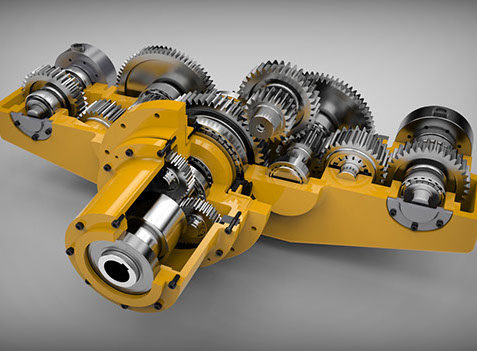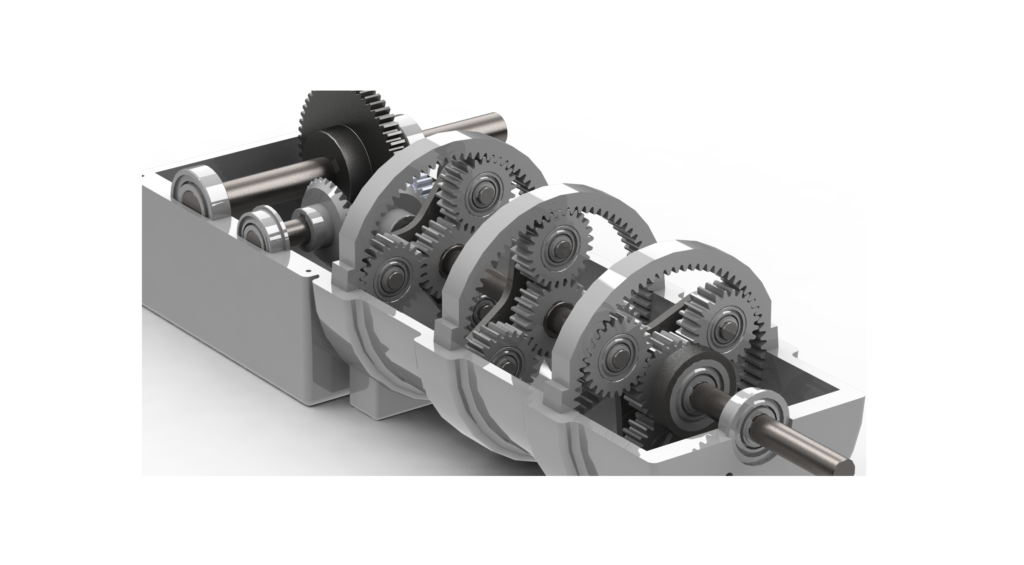Product Description
Product Description
HD
411
FAQ
-
1. How long have you been in this business?
We have 17 years of industry experience. Mine truck parts only!
-
2.Do you have enough products?
10000 kinds of varieties. ONE STOP SHOPPING of mining Truck Parts.
-
3.Can you be trusted?
Our long-term good cooperation with 100+ customers around the world is the best proof.
-
4.Can there be an account period?
O/A 90 DAYS
-
5.Are you a factory or a trading company?
trading company. we have 2000+Factory perfect supply chain. Strictly check quality and control risk for you.
-
6.How long will the delivery?
Within a week.
-
7.Is there a discount for new customers?
New customers get up to 10% off their first order.
| After-sales Service: | on-Line Service |
|---|---|
| Condition: | New |
| Axle Number: | 3 |
| Application: | Truck |
| Certification: | DIN, ISO |
| Material: | Steel |
| Samples: |
US$ 50/Piece
1 Piece(Min.Order) | |
|---|
| Customization: |
Available
| Customized Request |
|---|

How do epicyclic gears contribute to gear reduction and speed increase?
Epicyclic gears, also known as planetary gears, play a significant role in achieving gear reduction and speed increase in various mechanical systems. Here’s a detailed explanation:
1. Gear Reduction:
Epicyclic gears can achieve gear reduction by utilizing their unique gear arrangement. The gear reduction is achieved by fixing or holding certain components of the gear system, such as the ring gear or the planet carrier, while the input and output shafts rotate. This causes the sun gear to drive the planet gears, resulting in a reduction of output speed and an increase in torque. The gear ratio formula for gear reduction in an epicyclic gear system is R = (1 + S) / (1 + R), where R is the number of teeth on the ring gear and S is the number of teeth on the sun gear.
2. Speed Increase:
Epicyclic gears can also be used to achieve speed increase when certain components of the gear system are held fixed or driven while the output shaft rotates. In this configuration, the input torque is divided among multiple planet gears, which rotate around the sun gear and drive the output shaft. This results in an increase in output speed and a decrease in torque. The gear ratio formula for speed increase in an epicyclic gear system is R = (1 + R) / (1 + S), where R is the number of teeth on the ring gear and S is the number of teeth on the sun gear.
3. Multiple Stages:
Epicyclic gears can achieve higher gear reduction or speed increase by incorporating multiple stages within a single gear system. Each stage consists of a set of gears, including a sun gear, planet gears, and a ring gear. The output of one stage becomes the input for the next stage, allowing for a cumulative effect on the gear ratio. By stacking multiple stages, the overall gear reduction or speed increase can be multiplied, providing a wide range of gear ratios to suit different application requirements.
4. Customizable Gear Ratios:
Epicyclic gears offer flexibility in achieving customizable gear ratios. By varying the number of teeth on the gears or using different combinations of gears, specific gear ratios can be obtained to meet the needs of the application. This customization capability allows for optimized speed control, gear reduction, and torque multiplication, making epicyclic gears versatile in a wide range of mechanical systems.
5. Compact Design:
Epicyclic gears contribute to gear reduction and speed increase while maintaining a compact design. The concentric arrangement of gears and the ability to achieve multiple gear stages within a single gear system result in a smaller overall footprint compared to other gear arrangements. This compact design is particularly useful in space-constrained applications where achieving high gear reduction or speed increase is essential.
In summary, epicyclic gears contribute to gear reduction and speed increase through their unique gear arrangement, multiple stages, customizable gear ratios, and compact design. These features make them widely used in various mechanical systems, such as automotive transmissions, industrial machinery, and robotics, where efficient power transmission and speed control are crucial.

How do epicyclic gears offer compact solutions in space-constrained applications?
Epicyclic gears, also known as planetary gears, provide compact solutions in space-constrained applications. Here’s a detailed explanation:
1. Concentric Design:
Epicyclic gears have a concentric design where multiple gears are arranged around a central sun gear. This concentric arrangement allows for the transmission of torque and motion within a compact space. The gears share a common center, resulting in a smaller overall footprint compared to other gear systems.
2. Multiple Gear Stages:
Epicyclic gears can achieve multiple gear stages within a single gear system. By stacking planet gears and incorporating additional ring gears, the gear reduction or speed increase can be multiplied, all within a compact assembly. This eliminates the need for multiple separate gear systems, saving space and simplifying the mechanical layout.
3. High Gear Reduction:
Epicyclic gears offer high gear reduction capabilities. The arrangement of multiple planet gears allows for a high reduction ratio within a single stage of gears. This high gear reduction enables compact power transmission systems and is particularly useful in applications where space is limited, such as small robots or micro-actuators.
4. Inline Input and Output:
Epicyclic gears have an inline input and output configuration, where the input and output shafts are aligned on the same axis. This inline arrangement contributes to a more compact design, as it eliminates the need for additional space to redirect the motion or torque between non-aligned shafts.
5. Integration with Other Components:
Epicyclic gears can be easily integrated with other mechanical components, such as motors or actuators, within a compact space. The modular design of epicyclic gears allows for seamless integration, enabling the creation of more compact and efficient power transmission systems.
6. Customizable Gear Ratios:
Epicyclic gears offer flexibility in achieving customizable gear ratios. By varying the number of teeth on the gears or using different combinations of gears, specific gear ratios can be obtained to meet the requirements of the application. This customization capability allows for optimized space utilization and efficient power transmission.
7. Reduction of External Support Components:
Epicyclic gears can reduce the need for additional support components, such as idler gears or external shafts, which are often required in other gear systems. By incorporating multiple gears within a single assembly, epicyclic gears can achieve the desired motion and torque transfer without relying on external supporting structures, resulting in a more compact overall system.
In summary, epicyclic gears offer compact solutions in space-constrained applications through their concentric design, multiple gear stages, high gear reduction capabilities, inline input and output configuration, integration with other components, customizable gear ratios, and reduction of external support components. These features make epicyclic gears a preferred choice for achieving compact and efficient power transmission in various applications where space is limited.
“`
How do epicyclic gears contribute to power transmission in machinery?
Epicyclic gears, also known as planetary gears, play a crucial role in power transmission within machinery. Here’s a detailed explanation of their contribution:
1. Gear Reduction:
Epicyclic gears allow for significant gear reduction, which is the process of reducing the rotational speed of the output shaft compared to the input shaft. By configuring the gear engagement and gear ratios, epicyclic gears can achieve high reduction ratios, enabling machinery to operate at lower speeds while maintaining high torque output.
2. Torque Multiplication:
Epicyclic gears also provide torque multiplication, which is the process of increasing the torque output compared to the torque applied at the input. By utilizing the gear ratios and gear arrangement, epicyclic gears can effectively multiply the torque, allowing machinery to generate higher rotational force for heavy-duty applications.
3. Compactness:
Epicyclic gears offer a compact design, making them ideal for applications where space is limited. The arrangement of the sun gear, planet gears, and annular gear allows for a high gear reduction or multiplication within a small footprint. This compactness is particularly advantageous in industries such as automotive, aerospace, and robotics, where efficient power transmission is required in confined spaces.
4. Versatile Gear Ratios:
Epicyclic gears provide a wide range of gear ratios, which allows machinery to adapt to different operational requirements. By selecting the appropriate combination of gear engagement and gear ratios, the speed and torque characteristics of the machinery can be tailored to specific applications. This versatility in gear ratios enhances the flexibility and performance of machinery across various industries.
5. Precise Control:
Epicyclic gears enable precise control over power transmission within machinery. The combination of rotational and orbital motion in planetary gear sets allows for smooth and precise adjustments of speed and torque. This level of control is crucial in applications that require accurate positioning, speed regulation, and responsive power transfer.
6. Multiple Functions:
Epicyclic gears offer various functions beyond power transmission. They can be utilized for directional changes, torque splitting, braking, and speed synchronization. These additional functions enhance the versatility and efficiency of machinery, allowing for complex operations and improved overall performance.
Overall, epicyclic gears contribute to power transmission in machinery by providing gear reduction, torque multiplication, compactness, versatile gear ratios, precise control, and multiple functions. Their unique design and capabilities make them a valuable component in a wide range of industries and applications.


editor by CX 2023-09-12